Year 9 Science
The following curriculum resources are designed for units which follow the Australian Curriculum. Each unit is one term long and will have a central topic such as Chemistry, Biology, Physics, or Geology. The Learning Goals and Success Criteria documents are the key guide to the instructional program for each unit.The units, in order are;
Term 1: Body Systems
Term 2: Carbon and Global Warming ASSIGN
Term 3:Chemistry
Term 4:Energy - Electricity, Sound, and Light: ASSIGN
Additional Topic: Earth and Space: ASSIGN
Unit 1: Body Systems
Students gain a knowledge and understanding of some of the basic interactions of common body systems.Assessment: Examination
![]() Learning Goals and Success Criteria
Learning Goals and Success Criteria
Introduction to the six body systems
![]() Figuring out the six body systems in this unit. - mix and match body systems (the ones in this unit) with their main organs and function. Good basic intro stuff.
Figuring out the six body systems in this unit. - mix and match body systems (the ones in this unit) with their main organs and function. Good basic intro stuff.
Learning goal 1: Students will understand that the Digestive System breaks food down to nutrients that are able to pass into the blood and removes wastes.
![]() Labelled and coloured DIgestive system - simple and perfect for year 9. Is colour coded so may not print so well in black and white.
Labelled and coloured DIgestive system - simple and perfect for year 9. Is colour coded so may not print so well in black and white.
![]() Food and Digestion Booklet (6 pages) - good basic notes and questions, edited to suit this course, could be completed as a self learning booklet
Food and Digestion Booklet (6 pages) - good basic notes and questions, edited to suit this course, could be completed as a self learning booklet
 Answers to the booklet above - This booklet is the original pdf from the web. The word doc booklet above is a very heavily edited version, so appears different - but answers will be in this pdf, they may be hard to find though
Answers to the booklet above - This booklet is the original pdf from the web. The word doc booklet above is a very heavily edited version, so appears different - but answers will be in this pdf, they may be hard to find though
![]() Digestion 11 min video by Crash course. Covers the basics and is interesting. Part 1 of a 3 part series, but this is the only one you need for our course.
Digestion 11 min video by Crash course. Covers the basics and is interesting. Part 1 of a 3 part series, but this is the only one you need for our course.
![]() Digestion PowerPoint - sourced from foodfactoflife A nice simple linear sequence of ideas. All the knowledge you need for digestion as there is lots of info here.
Digestion PowerPoint - sourced from foodfactoflife A nice simple linear sequence of ideas. All the knowledge you need for digestion as there is lots of info here.
 Digestive system Quiz - easy to use, test some simple functions.
Digestive system Quiz - easy to use, test some simple functions.
 Digestion Game - little bit of fun, not a lot of knowledge, but I was unable to complete it on several attempts, so I liked it. Will not open in school at the moment.
Digestion Game - little bit of fun, not a lot of knowledge, but I was unable to complete it on several attempts, so I liked it. Will not open in school at the moment.
 *Experiment - Energy in Food Experiment in burning food using a calorimeter (can use a simple test tube arrangement). This is the Exo I will go with (limited time), but a couple more are suggested below.
*Experiment - Energy in Food Experiment in burning food using a calorimeter (can use a simple test tube arrangement). This is the Exo I will go with (limited time), but a couple more are suggested below.
 Starch and Glucose Experiment An oldie of an experiment, but a goodie. May need to add instructions for using Benedict's solution.
Starch and Glucose Experiment An oldie of an experiment, but a goodie. May need to add instructions for using Benedict's solution.
 Antacid Experiment - a nice simple experiment investigating the efficacy of antacids. Not particularly realistic for several reasons but very appropriate for middle school science
Antacid Experiment - a nice simple experiment investigating the efficacy of antacids. Not particularly realistic for several reasons but very appropriate for middle school science
 More advanced Antacid Experiment - Uses burettes so this may be difficult with some classes, but simple process.
More advanced Antacid Experiment - Uses burettes so this may be difficult with some classes, but simple process.
![]() Experiment on Enzymes in Washing Powders - A great experiment if you have the resources. I will do this as an exercise in dealing with data and working on mean and standard deviation (practice for senior). Note - apparently the enzymes in washing powder thing is over, so this prac does no really work, shame, was excellent.
Experiment on Enzymes in Washing Powders - A great experiment if you have the resources. I will do this as an exercise in dealing with data and working on mean and standard deviation (practice for senior). Note - apparently the enzymes in washing powder thing is over, so this prac does no really work, shame, was excellent.
![]() Homework Sheet 2 - a homework sheet which measures you knowledge of each of the Success Criteria in the 2nd Learning Goal
Homework Sheet 2 - a homework sheet which measures you knowledge of each of the Success Criteria in the 2nd Learning Goal
Digestive system comparison (picture) - Vulture, Koala, Human. The last Success Criteria asks you to compare the digestive systems of humans, vultures, and Koalas. I found suprisingly few (free) high school level resources for this. However Stileapp does coverage of this comparison - so that SC will be done on the Stileapp.
Learning goal 2: Students will understand the Respiratory System brings oxygen into the body and removes carbon dioxide.
 Respiratory system Study notes - Good notes. From a CK12 online textbook (great organisation). I have edited them a little. The textbook and study notes are here. Study notes are in the resources tab.
Respiratory system Study notes - Good notes. From a CK12 online textbook (great organisation). I have edited them a little. The textbook and study notes are here. Study notes are in the resources tab.
![]() worksheet - to go with the study notes above
worksheet - to go with the study notes above
![]() Respiratory system 3 min video by Fuse school. Covers the basics and is simple, good for our course.
Respiratory system 3 min video by Fuse school. Covers the basics and is simple, good for our course.
![]() How breathing works 4 min video by Operation Ouch. You will have seen these twins on TV, this is more interesting than information about the system.
How breathing works 4 min video by Operation Ouch. You will have seen these twins on TV, this is more interesting than information about the system.
![]() Respiration PowerPoint - quite good, a tiny bit more detail than we need but a good clean source of information.
Respiration PowerPoint - quite good, a tiny bit more detail than we need but a good clean source of information.
 Oxygen Exchange - a reading comprehension exercise.
Oxygen Exchange - a reading comprehension exercise.
![]() Respiration notes - a nice simple clean source of information
Respiration notes - a nice simple clean source of information
![]() Cloze exercise - obviously on the respiratory system.
Cloze exercise - obviously on the respiratory system.
![]() Homework Sheet 4 - a homework sheet which measures your knowledge of each of the Success Criteria in the 4th Learning Goal
Homework Sheet 4 - a homework sheet which measures your knowledge of each of the Success Criteria in the 4th Learning Goal
Learning goal 3: Students will understand the Circulatory System uses blood vessels to transport nutrients to cells of the body and to remove wastes.
 Circulatory system Study notes - Good notes. From a CK12 online textbook (great organisation). The textbook and study notes (resources tab) are here. 13.27 to 13.31 cover our course.
Circulatory system Study notes - Good notes. From a CK12 online textbook (great organisation). The textbook and study notes (resources tab) are here. 13.27 to 13.31 cover our course.
![]() Circulatory worksheet - pretty easy
Circulatory worksheet - pretty easy
 Video about heart - an older video but very clear and excellent for learning. There are some discussion qs just below video which you could use to check understanding.
Video about heart - an older video but very clear and excellent for learning. There are some discussion qs just below video which you could use to check understanding.
![]() A short HEART video 3+ min video by the Mayo Clinic. Good, sort of basic, but still excellent coverage of ideas.
A short HEART video 3+ min video by the Mayo Clinic. Good, sort of basic, but still excellent coverage of ideas.
 Interactive of heart beating - Launch page of "a map of the human heart". Launch from here and set the heart beat (class average?). Use the step through and the discussion qs (below interactive).
Interactive of heart beating - Launch page of "a map of the human heart". Launch from here and set the heart beat (class average?). Use the step through and the discussion qs (below interactive).
![]() Heart worksheet - simplified diagram of the heart to label and a flowchart
Heart worksheet - simplified diagram of the heart to label and a flowchart
 Matching Terms and Meaning game - use at the end as a review
Matching Terms and Meaning game - use at the end as a review
![]() Homework Sheet 3 - a homework sheet which measures you knowledge of each of the Success Criteria in the 3rd Learning Goal
Homework Sheet 3 - a homework sheet which measures you knowledge of each of the Success Criteria in the 3rd Learning Goal
Scientific Inquiry Practice
 Practice Questions - 8 pages of Scientific Inquiry practice. This is a selection and rearrangement of Qs from the sheets listed below. I will use this in class rather than the larger set.
Practice Questions - 8 pages of Scientific Inquiry practice. This is a selection and rearrangement of Qs from the sheets listed below. I will use this in class rather than the larger set.
 Practice Questions - 15 pages of Scientific Inquiry practice. This is a heavily edited (was well over 54 pages) version of some NSW HSC questions and some Qs from an OHIO Uni test. Not perfect, but something.
Practice Questions - 15 pages of Scientific Inquiry practice. This is a heavily edited (was well over 54 pages) version of some NSW HSC questions and some Qs from an OHIO Uni test. Not perfect, but something.
Learning goal 4: Students will understand the Excretory System removes waste from the body and includes the Urinary System that filters waste from the blood.
 Excretory system Study notes - Good notes. From a CK12 online textbook (great organisation).
Excretory system Study notes - Good notes. From a CK12 online textbook (great organisation).
![]() Kidneys and Homeostasis 12 min video by Crash course. I like it.
Kidneys and Homeostasis 12 min video by Crash course. I like it.
![]() Water balance and homeostasis PowerPoint - not really part of our course, but interesting. Not sure of the author, listed and J and C in details, and can't give credit.
Water balance and homeostasis PowerPoint - not really part of our course, but interesting. Not sure of the author, listed and J and C in details, and can't give credit.
![]() Homework Sheet 5 - a homework sheet which measures you knowledge of each of the Success Criteria in the 5th Learning Goal
Homework Sheet 5 - a homework sheet which measures you knowledge of each of the Success Criteria in the 5th Learning Goal
Learning goal 5: Students will understand that the coordination of all body systems is carried out by the Nervous and Endocrine systems.
 Nervous System study notes - Good notes, but more detailed than we need. From a CK12 online textbook (great organisation). I have edited them. The textbook and study notes are here - sections 16 to 19 relate to our course. Study notes are in the resources tab.
Nervous System study notes - Good notes, but more detailed than we need. From a CK12 online textbook (great organisation). I have edited them. The textbook and study notes are here - sections 16 to 19 relate to our course. Study notes are in the resources tab.
![]() Nervous system Simple - by make me genious. 4.5 mins. Nice simple approach, focusses on the basics. Good for overall picture.
Nervous system Simple - by make me genious. 4.5 mins. Nice simple approach, focusses on the basics. Good for overall picture.
![]() Nervous system detailed - by Crash Course. 10.5 mins. More detail than we need, but love the way he covers the main points.
Nervous system detailed - by Crash Course. 10.5 mins. More detail than we need, but love the way he covers the main points.
![]() Nervous system quiz - 10 questions, MC.
Nervous system quiz - 10 questions, MC.
![]() Endocrine system - edited notes from CK-12. Some questions at the end. Original link is in the header (double click it to access) - has a video
Endocrine system - edited notes from CK-12. Some questions at the end. Original link is in the header (double click it to access) - has a video
![]() Endocrine System. A GCSE video - Keeps it simple enough for this course without being too simple.
Endocrine System. A GCSE video - Keeps it simple enough for this course without being too simple.
Learning goal 6: Students will understand the Immune System protects the body from pathogens and their toxins
![]() 2021 Revision Sheet 2 2021 version with the immune system and not the excretory system.
2021 Revision Sheet 2 2021 version with the immune system and not the excretory system.
![]() 2022 Revision Sheet 2 2022 version without the immune system and the excretory system.
2022 Revision Sheet 2 2022 version without the immune system and the excretory system.
![]() Answers - Revision sheet 1. You should use this to check your answers, not as a cheat sheet, but up to you.
Answers - Revision sheet 1. You should use this to check your answers, not as a cheat sheet, but up to you.
![]() Answers - Revision sheet 2. You should use this to check your answers, not as a cheat sheet, but up to you.
Answers - Revision sheet 2. You should use this to check your answers, not as a cheat sheet, but up to you.
TERM 2 - Unit 2: Carbon and Global Warming
The section is under reconstruction. I have not taught year 9 for several years and this unit has changed, so will be re-resourced over the term!
![]() Learning Goals and Success Criteria this is currently the 2024 version - will be updated soon.
Learning Goals and Success Criteria this is currently the 2024 version - will be updated soon.
![]() Student Planner - Weekly planner. This is the 2024 planner, so the dates are well out. Updated when available
Student Planner - Weekly planner. This is the 2024 planner, so the dates are well out. Updated when available
Assessment:
Assignment Start in week 5, will be available then.
LG 1: Students can explain Earth as a system, describing Earth’s spheres and discussing examples of interactions between different spheres.
![]() Simple pre and post test on LG 1 - could do prior and post coverage of this unit.
Simple pre and post test on LG 1 - could do prior and post coverage of this unit.
![]() Biophysical Environment - Ecosystems and Interactions - Clickview video online (my library): you will have to login and if link is not direct then search for this video title
Biophysical Environment - Ecosystems and Interactions - Clickview video online (my library): you will have to login and if link is not direct then search for this video title
![]() Multiple Choice Qs - The Biophysical Environment- do as pre and post video quiz answers (at end)
Multiple Choice Qs - The Biophysical Environment- do as pre and post video quiz answers (at end)
![]() Schematic of 4 Spheres of the earth- there are 6 repeat pics on the page
Schematic of 4 Spheres of the earth- there are 6 repeat pics on the page
![]() 4 Spheres of the Earth - good source of basic knowledge notes for each sphere. Did not use as students do research on the next worksheet.
4 Spheres of the Earth - good source of basic knowledge notes for each sphere. Did not use as students do research on the next worksheet.
![]() Four sphere interactions Worksheet Good worksheet. Get students to do some very quick research in first part, then complete the worksheet and crossword below.
Four sphere interactions Worksheet Good worksheet. Get students to do some very quick research in first part, then complete the worksheet and crossword below.
![]() Small crossword on the four spheres
Small crossword on the four spheres
Terrariums are great examples of a closed system. I personally don't like building terrariums with a class as a lot a specialist material is needed to get a truly viable terrarium. I could not find an online terrarium which I found sort of odd. the two links below are to online closed systems which students can manipulate... but they are not terrariums!
 terrarium... of sorts? Aquatic, and very simple. Keep an eye on the CO2/O2 meter.
terrarium... of sorts? Aquatic, and very simple. Keep an eye on the CO2/O2 meter.
 Mission to Mars - Resourcing the voyage Way more complex than the one above. This game requires some prior knowledge (ecosystem terms), and treats the mission to mars as a closed system... see how long you last!
Mission to Mars - Resourcing the voyage Way more complex than the one above. This game requires some prior knowledge (ecosystem terms), and treats the mission to mars as a closed system... see how long you last!
LG 2: Students can construct a diagram of the carbon cycle and explain the role of photosynthesis and respiration in that cycle.
![]() Global Carbon Cycle A crash course video, 10.5 mins long. May be a good place to start for some general mind bending info. No exam for this unit so ideas are the focus, not so much the detail.
Global Carbon Cycle A crash course video, 10.5 mins long. May be a good place to start for some general mind bending info. No exam for this unit so ideas are the focus, not so much the detail.
![]() Carbon cycle worksheet with diagram - Good detail. May be too complex for some students, but it shows a comprehensive understanding of the complete carbon cycle. Simpler version below. right click and openthe image on the right and it will show the image from the handout, but with values icluded. First thing is to go thru the diagram of the whole cycle explaining the processes, seeing how much prior knowledge they have, and discussing the significance of the amounts of carbon being exchanged. Then student have a chance to complete the worksheet.
Carbon cycle worksheet with diagram - Good detail. May be too complex for some students, but it shows a comprehensive understanding of the complete carbon cycle. Simpler version below. right click and openthe image on the right and it will show the image from the handout, but with values icluded. First thing is to go thru the diagram of the whole cycle explaining the processes, seeing how much prior knowledge they have, and discussing the significance of the amounts of carbon being exchanged. Then student have a chance to complete the worksheet.
![]() Simple Carbon Cycle (incomplete - see link below). Don't be pt off by how simpistic the diagram looks... lots to added in labels and colour - both of which can be obtained from the video (please read my comment with it) below.
Simple Carbon Cycle (incomplete - see link below). Don't be pt off by how simpistic the diagram looks... lots to added in labels and colour - both of which can be obtained from the video (please read my comment with it) below.
![]() Carbon Cycle Diagram draw - by Navyansh Art. nearly nine mins. Can show whole video, or using the blank above, go to the end so students can get the missing colours and labels.
Carbon Cycle Diagram draw - by Navyansh Art. nearly nine mins. Can show whole video, or using the blank above, go to the end so students can get the missing colours and labels.
LG 3: Students can analyse the greenhouse effect and relate it to the role carbon plays in maintaining temperatures that support life on earth..
![]() The Greenhouse Effect. Some information and some MC Qs and short answer.
The Greenhouse Effect. Some information and some MC Qs and short answer.
 Data on global temperature variation this is set for the month of April (random choice, can change it). Download this data as a CSV file (it will open in excel). Graph the data, fit a trend line (2nd order polynomial is the better fit), use the equation to the trend line (will have to reformat the equation as "text" to get more accurate values in it) to make a estimate of when the tmperature will have risen by 1.5 degrees.
Data on global temperature variation this is set for the month of April (random choice, can change it). Download this data as a CSV file (it will open in excel). Graph the data, fit a trend line (2nd order polynomial is the better fit), use the equation to the trend line (will have to reformat the equation as "text" to get more accurate values in it) to make a estimate of when the tmperature will have risen by 1.5 degrees.
![]() Worksheet using simulations relating to the greenhouse effect. Self-paced work for students using simulations developed by Phet. This worksheet is not originally my own work (some editing). The activity is original to PhET (Uni of Colorado). I recomend scouting there for more greenhouse gas simulations and activities.
Worksheet using simulations relating to the greenhouse effect. Self-paced work for students using simulations developed by Phet. This worksheet is not originally my own work (some editing). The activity is original to PhET (Uni of Colorado). I recomend scouting there for more greenhouse gas simulations and activities.
Ocean acidification
![]() Chemistry of how ocean acidification happens. This is a little above the chemistry level of Year 9, but it is very clearly explained and the last slide (animation has a good summary for the assignment)
Chemistry of how ocean acidification happens. This is a little above the chemistry level of Year 9, but it is very clearly explained and the last slide (animation has a good summary for the assignment)
![]() How ocean acidification happens. - Found this on a Uni of Plymouth page and liked its simple and very clear explaination. This link will open as a Youtube video, but the original page link is- https://www.plymouth.ac.uk/research/ocean-acidification
How ocean acidification happens. - Found this on a Uni of Plymouth page and liked its simple and very clear explaination. This link will open as a Youtube video, but the original page link is- https://www.plymouth.ac.uk/research/ocean-acidification
 article abut effect of Ocean acidification on crab larvae This article is an excellent example of how we think ocean acidification will affect ecosystems - not by directly affecting animals with large think shell, but by altering the animals success in the very thin shelled larval stages.
article abut effect of Ocean acidification on crab larvae This article is an excellent example of how we think ocean acidification will affect ecosystems - not by directly affecting animals with large think shell, but by altering the animals success in the very thin shelled larval stages.
 Drag and Drop game on Ocean Acidification
Drag and Drop game on Ocean Acidification
Ocean Acidification Assignment
Below is the 2024 Ocean Acidification Assignment. Carbon and Global warming is a massive assignment and this assignment focuses on Ocean acidification. There are several copies, each with a specific purpose, so choose your version carefully. There is also one extension version for an academic class.
![]() Ocean Acidification Assignment HANDOUT COPY : This copy has space for students to handwrite their answers and can be used as a final copy to hand in once completed
Ocean Acidification Assignment HANDOUT COPY : This copy has space for students to handwrite their answers and can be used as a final copy to hand in once completed
![]() Ocean Acidification Assignment ELECTRONIC COPY : This copy has expandable space for student to type their answers directly into. An excel graph or a scanned graph needs to be pasted in as well.
Ocean Acidification Assignment ELECTRONIC COPY : This copy has expandable space for student to type their answers directly into. An excel graph or a scanned graph needs to be pasted in as well.
![]() Ocean Acidification Assignment TASK 1 - Student answer sheet:is the sheet for students to write their task 1. It should be completed in 30 minutes under exam conditions.
Ocean Acidification Assignment TASK 1 - Student answer sheet:is the sheet for students to write their task 1. It should be completed in 30 minutes under exam conditions.
![]() Ocean Acidification Assignment EXTENSION - ELECTRONIC COPY : This copy is slightly different in the evaluating section, and is more suited to academic students wishing to improve their analysis and evaluating skills.
Ocean Acidification Assignment EXTENSION - ELECTRONIC COPY : This copy is slightly different in the evaluating section, and is more suited to academic students wishing to improve their analysis and evaluating skills.
Term 3: Chemistry
Students study structure of atoms and chemical reactions.Assessment: Exam - based on the four mandatory experiments
![]() Learning Goals and Success Criteria for 2024
Learning Goals and Success Criteria for 2024
![]() Student Term planner for 2024 Not available yet - to be finalised (new unit being developed)
Student Term planner for 2024 Not available yet - to be finalised (new unit being developed)
LG 1 - Students can explain how the model of an atom changed following the discovery of protons, neutrons and electrons.
![]() History of Atomic Chemistry - crash Course. This is nearly ten mins long, but is a good video. The resource below also covers this topic, so these two can be done in any order.
History of Atomic Chemistry - crash Course. This is nearly ten mins long, but is a good video. The resource below also covers this topic, so these two can be done in any order.
![]() History of Atomic structure Has a timeline on page 1 (highlight for notes), and some simple questions to check for understanding on page 2. Suggest you print 2 pages to a page to fit in all into one A4 sheet (that is why the font size is so large on page 2)
History of Atomic structure Has a timeline on page 1 (highlight for notes), and some simple questions to check for understanding on page 2. Suggest you print 2 pages to a page to fit in all into one A4 sheet (that is why the font size is so large on page 2)
![]() Homework sheet 1 Covers LG 1
Homework sheet 1 Covers LG 1
![]() ANSWERS Homework sheet 1 - not released yet
ANSWERS Homework sheet 1 - not released yet
![]() Structure of Atoms - by Tyler DeWhitt
Structure of Atoms - by Tyler DeWhitt
![]() Notes for Atomic Structure - 2 pages of typed notes. Need to cut and paste in and go through and highlight or underline key knowledge. Pretty much memorise the info on this page. At the end is a little summary of the results they get at the inteactive below.
Notes for Atomic Structure - 2 pages of typed notes. Need to cut and paste in and go through and highlight or underline key knowledge. Pretty much memorise the info on this page. At the end is a little summary of the results they get at the inteactive below.
![]() Worksheet for Atomic Structure - 4 pages (I do 2 to a page). Questions on atomic structure. Has a couple of extra Qs slightly outside this topic, so maybe edit for some classes. Good for homework or in class. No Answers
Worksheet for Atomic Structure - 4 pages (I do 2 to a page). Questions on atomic structure. Has a couple of extra Qs slightly outside this topic, so maybe edit for some classes. Good for homework or in class. No Answers
 interactive on parts of the Atom - Simple, Accurate, suited to this course, and has a checking for understanding - a rare online site. Excellent. Can use this to source notes - make a table from the checking for understanding at the end by asking students to copy the table and write in the correct answers that they get online.
interactive on parts of the Atom - Simple, Accurate, suited to this course, and has a checking for understanding - a rare online site. Excellent. Can use this to source notes - make a table from the checking for understanding at the end by asking students to copy the table and write in the correct answers that they get online.
 Experiment - plastic from milk - Simple ahnds on experiment to start the Unit. This site has a video showing the process. I used 2% fat milk and heated to less than 50 deg Celcius and it worked a treat. Each group can heat the milk, then share out the curds so each student gets their own plastic. Great intro to chemical reactions (its acid/base even, sort of).
Experiment - plastic from milk - Simple ahnds on experiment to start the Unit. This site has a video showing the process. I used 2% fat milk and heated to less than 50 deg Celcius and it worked a treat. Each group can heat the milk, then share out the curds so each student gets their own plastic. Great intro to chemical reactions (its acid/base even, sort of).
 Video on why atoms appear solid. - Accurate, simple and direct - 1+ min long. Should be longer to fully explain the idea of electron stucture and movement, but a great point to start a discussion how electrons create these vast areas of electric field to interact with other atoms (use the blades of a fan analogy here).
Video on why atoms appear solid. - Accurate, simple and direct - 1+ min long. Should be longer to fully explain the idea of electron stucture and movement, but a great point to start a discussion how electrons create these vast areas of electric field to interact with other atoms (use the blades of a fan analogy here).
![]() Electron energy levels in elements - Template for filling the electrons in the correct shells. Word doc so you can vary the contast to get a good printout. Original pdf is from Amer. Chem. Society here
Electron energy levels in elements - Template for filling the electrons in the correct shells. Word doc so you can vary the contast to get a good printout. Original pdf is from Amer. Chem. Society here
 Text/Qs on Atoms - 3pgs of text plus 1 pg of Qs - can do all Qs. Can just use the Qs, but notes are good for students who miss class and need to keep up.
Text/Qs on Atoms - 3pgs of text plus 1 pg of Qs - can do all Qs. Can just use the Qs, but notes are good for students who miss class and need to keep up.
![]() Worksheet on Atomic and Mass numbers - good practice, but repetitive. Some questions given clues (protons, neutrons, electrons, etc) to the identity of elements
Worksheet on Atomic and Mass numbers - good practice, but repetitive. Some questions given clues (protons, neutrons, electrons, etc) to the identity of elements
 Interactive on Atomic structure - Good - Click on the games icon. There are four to play, checking general and simple knowledge of atomic structure
Interactive on Atomic structure - Good - Click on the games icon. There are four to play, checking general and simple knowledge of atomic structure
 Teaching plans for electron energy levels - 20 pages with additional info for those teachers a little less familiar with the idea. Cut/paste from Amer.Chem.Soc.
Teaching plans for electron energy levels - 20 pages with additional info for those teachers a little less familiar with the idea. Cut/paste from Amer.Chem.Soc.
![]() WORKSHEET - Isotopes and atomic mass- room to write a definition (isotopes), and some Qs on the number of neutrons etc in isotopes.
WORKSHEET - Isotopes and atomic mass- room to write a definition (isotopes), and some Qs on the number of neutrons etc in isotopes.
![]() Taxonomy exercise on Atoms etc - a little literacy work, starts easy.
Taxonomy exercise on Atoms etc - a little literacy work, starts easy.
LG 2 - Students can describe how natural radioactive decay results in stable atoms.
The first link below is a very good source of info for notes. for this topic we need to start with the idea of stable isotope (not radioactive) versus unstable isotopes (radioactive); and the types of radiation releases when an isotope "decays". There are notes needed for SC 9, 10 , and 11; but I would leave these till later.
 Notes on Types of Radiation - Scroll down to heading 5. Covers alpha, beta, and gamma in the form of info you can make notes from. There are some diagrams, 2nd link below which cover these three types of radiation - cut and paste these in with notes on alpha, beta, and gamma radiation. one diagram also demonstrates the penetrating powers of the three types of nuclear radiation. By the way, on this page they discuss emission of neutrons - neutrons are emitted in nuclear reactions, not by isotopes, so are not part of this course.
Notes on Types of Radiation - Scroll down to heading 5. Covers alpha, beta, and gamma in the form of info you can make notes from. There are some diagrams, 2nd link below which cover these three types of radiation - cut and paste these in with notes on alpha, beta, and gamma radiation. one diagram also demonstrates the penetrating powers of the three types of nuclear radiation. By the way, on this page they discuss emission of neutrons - neutrons are emitted in nuclear reactions, not by isotopes, so are not part of this course.
![]() What are, and what causes radioactive isotopes? - 5 mins, by FuseSchool. Explain what isotopes are, why some are radioactive, and a little about how they are used. Excellent, but does not cover types of radiation.
What are, and what causes radioactive isotopes? - 5 mins, by FuseSchool. Explain what isotopes are, why some are radioactive, and a little about how they are used. Excellent, but does not cover types of radiation.
![]() Diagrams of Radiation - these contain the three examples in the SC, and radiation penetration diagram - good visuals - use heading to organise and cut and paste in
Diagrams of Radiation - these contain the three examples in the SC, and radiation penetration diagram - good visuals - use heading to organise and cut and paste in
 Link to some common industrial radioistopes (scroll down on page)
Link to some common industrial radioistopes (scroll down on page)
![]() Radioactive decay activity - simulation and graphing activity on radioactive dating. To tell the truth I don't use this.
Radioactive decay activity - simulation and graphing activity on radioactive dating. To tell the truth I don't use this.
![]() Nuclear Radioactivity Worksheet - covers radioactivity and radiation reactions. This is the easier version (my edit), suited to this unit. The original, with more detail is HERE
Nuclear Radioactivity Worksheet - covers radioactivity and radiation reactions. This is the easier version (my edit), suited to this unit. The original, with more detail is HERE
 Answers to above worksheet - Qs 1-6 only
Answers to above worksheet - Qs 1-6 only
![]() Uranium and C 14 decay diagrams - pictues with go this SC10
Uranium and C 14 decay diagrams - pictues with go this SC10
![]() Radiometric dating with C 14 and U 238 - by Prof Dave. Pretty good, cover a lot of ground and is not always super simple. There other videos which cover decay better, but this does focus on the use for dating material.
Radiometric dating with C 14 and U 238 - by Prof Dave. Pretty good, cover a lot of ground and is not always super simple. There other videos which cover decay better, but this does focus on the use for dating material.
![]() Worksheet on Radiometic (C-14) dating Covers LG 2
Worksheet on Radiometic (C-14) dating Covers LG 2
LG 3 - Students can model the rearrangement of atoms in chemical equations using word and simple balanced chemical equations and use these to demonstrate the law of conservation of mass.
![]() Difference between Atoms and Molecules - by Tyler DeWhitt
Difference between Atoms and Molecules - by Tyler DeWhitt
The next three worksheets are not really necessary for the SC in this unit, but are easy "review" worksheets or serve as an introduction to the terms molecule, compound, mixture, pure substance. This may be useful review for some students before you start the "chemical equations" stuff
 Info and worksheet on Elements, compounds, and Mixtures. By Aurum Science website. Excellent site by James Dauray. I have edited this significantly so a hard copy of the edited version of James's worksheet is given here. The original website is here.
Info and worksheet on Elements, compounds, and Mixtures. By Aurum Science website. Excellent site by James Dauray. I have edited this significantly so a hard copy of the edited version of James's worksheet is given here. The original website is here.
 Worksheet on Elements, compounds, and Mixtures. By Stephanie Roscoe, a teacher in England. Posted on TES. Free resource, and excellent review of these ideas. Has two other sheets which I have not provided, so you can find on TES here
Worksheet on Elements, compounds, and Mixtures. By Stephanie Roscoe, a teacher in England. Posted on TES. Free resource, and excellent review of these ideas. Has two other sheets which I have not provided, so you can find on TES here
 Another worksheet on Elements, compounds, and Mixtures. This is a nice worksheet to sum it all up and check for understanding. Found it in a classroom and scanned it in, so no idea who the intellectual owner is, can't attribute it.
Another worksheet on Elements, compounds, and Mixtures. This is a nice worksheet to sum it all up and check for understanding. Found it in a classroom and scanned it in, so no idea who the intellectual owner is, can't attribute it.
 Worksheet & info: Parts of a Chemical Rn - I have edited this significantly, but the original site is Aurum Science website. Excellent site by James Dauray.
Worksheet & info: Parts of a Chemical Rn - I have edited this significantly, but the original site is Aurum Science website. Excellent site by James Dauray.
![]() *Looking inside Chemical Reactions - Worksheet to get students focused on what happens when chemicals react - looking at the atoms rearranging and the bonds broken and formed
*Looking inside Chemical Reactions - Worksheet to get students focused on what happens when chemicals react - looking at the atoms rearranging and the bonds broken and formed
![]() How to write simple chemical formulae - Tyler DeWitt (simple clear examples)
How to write simple chemical formulae - Tyler DeWitt (simple clear examples)
![]() Table of ions - Small table, has the basic ions for writing chemical formulae
Table of ions - Small table, has the basic ions for writing chemical formulae
![]() Writing formulae with polyatomic ions - Tyler DeWitt (shows use of brackets)
Writing formulae with polyatomic ions - Tyler DeWitt (shows use of brackets)
![]() *How to balance chemical equations - Mike Corsetti (slow but simple and easy to follow)
*How to balance chemical equations - Mike Corsetti (slow but simple and easy to follow)
![]() Theory and practice of balancing chemical equations - good source of notes for this section
Theory and practice of balancing chemical equations - good source of notes for this section
![]() Theory and practice of balancing chemical equations - good source of notes for this section
Theory and practice of balancing chemical equations - good source of notes for this section
![]() *Balancing chemical reaction - nice simple examples of balancing practice
*Balancing chemical reaction - nice simple examples of balancing practice
Interactive Balancing Equation Worksheets (and answers) - I used worksheet four. Scroll down to the worksheets and answers. There are four worksheets available, and two quizes at the very bottom. Thanks thoughtco!
![]() Revision sheet - 6 pages. Note that this follows the Success criteria and does not follow the exam.
Revision sheet - 6 pages. Note that this follows the Success criteria and does not follow the exam.
![]() ANSWERS to Revision sheet - these were primarily generated by AI (ChatGPT). I have edited though (ChatGPT could not read the diagrams), so should all be good.
ANSWERS to Revision sheet - these were primarily generated by AI (ChatGPT). I have edited though (ChatGPT could not read the diagrams), so should all be good.
 MC Qs generated by Perplexity AI program. May need to copy and paste address (in the adress bar) if your native browser is chrome as it does not appear to open natively in chrome... copy the address and open in edge browser. Will self mark when you click to submit. Same as above, follows the SC, not model Qs from the exam.
MC Qs generated by Perplexity AI program. May need to copy and paste address (in the adress bar) if your native browser is chrome as it does not appear to open natively in chrome... copy the address and open in edge browser. Will self mark when you click to submit. Same as above, follows the SC, not model Qs from the exam.
 MC Qs generated by ChatGPT AI program. May need to copy and paste address (in the adress bar) if your native browser is chrome as it does not appear to open natively in chrome... copy the address and open in edge browser. Will self mark when you click to submit. Same as above, follows the SC, not model Qs from the exam.
MC Qs generated by ChatGPT AI program. May need to copy and paste address (in the adress bar) if your native browser is chrome as it does not appear to open natively in chrome... copy the address and open in edge browser. Will self mark when you click to submit. Same as above, follows the SC, not model Qs from the exam.
LG 4 - Students can use Science inquiry skills to test ideas, predictions or hypotheses and draw conclusions in response to a question or problem.
This LG will be covered over the entirity of the course as students complete the four mandatory experiments listed below. While listed here, these experiments will be done throughout the course at various stages.
The following resources concern energy in chemical reactions, and reactions of acids with metals which are are no longer needed for our year nine chem course. They are here just in case someone (teacher) needs these resources.
![]() Energy in Chemical Reactions - notes for Energy in Chemical reactions. I add a couple of simple questions about how to recognise each type of reaction.
Energy in Chemical Reactions - notes for Energy in Chemical reactions. I add a couple of simple questions about how to recognise each type of reaction.
![]() Experiment - Exothermic or Endothermic? - Student sheets, instructions and questions. Teacher notes below. Based on a RAC experiment
Experiment - Exothermic or Endothermic? - Student sheets, instructions and questions. Teacher notes below. Based on a RAC experiment
 Experiment TEACHER NOTES - from the RAC site, apologies for breaking copyright and placing a copy here.
Experiment TEACHER NOTES - from the RAC site, apologies for breaking copyright and placing a copy here.
![]() Homework sheet 2 Covers LG 2
Homework sheet 2 Covers LG 2
 Homework sheet 2 ANSWERS - not released yet
Homework sheet 2 ANSWERS - not released yet
![]() Homework sheet 3 Covers LG 3
Homework sheet 3 Covers LG 3
![]() ANSWERS Homework sheet 3 - not released yet.
ANSWERS Homework sheet 3 - not released yet.
 Acids and Bases ppt - excellent for the notes needed
Acids and Bases ppt - excellent for the notes needed
 Acids and Bases ppt - I like the start of this one as at the start it makes the case for how important an understanding of acids and bases is.
Acids and Bases ppt - I like the start of this one as at the start it makes the case for how important an understanding of acids and bases is.
 CFU on Acids and bases - simple PPtwhich has about 5 questions to Check For Understanding.
CFU on Acids and bases - simple PPtwhich has about 5 questions to Check For Understanding.
 Small "fill in the blanks" CFU on Acids and Bases basics - a hard copy is HERE.
Small "fill in the blanks" CFU on Acids and Bases basics - a hard copy is HERE.
 Text on Acids and Bases - Chemlibre text. Comprehensive (very) for notes. Well above a regular year nine level.
Text on Acids and Bases - Chemlibre text. Comprehensive (very) for notes. Well above a regular year nine level.
![]() Experiment - reactions of acids - contains 3 experiments involving reactions with metals, carbonates, and bases.
Experiment - reactions of acids - contains 3 experiments involving reactions with metals, carbonates, and bases.
 Work up to 28th Feb - for students to catch up. Does not include prac work, almost all the handouts are from this web page.
Work up to 28th Feb - for students to catch up. Does not include prac work, almost all the handouts are from this web page.
 Combustion definition amd notes - a good source of notes, explains why oxygen is so important. Does not discuss CELLULAR RESPIRATION. By Thought.com
Combustion definition amd notes - a good source of notes, explains why oxygen is so important. Does not discuss CELLULAR RESPIRATION. By Thought.com
 Combustion reactions in Chemistry - More examples, but not glucose. Neither site really discusses Oxidation or rust of metals (hint - it's about RATE and MECHANISM). Also by throught.com
Combustion reactions in Chemistry - More examples, but not glucose. Neither site really discusses Oxidation or rust of metals (hint - it's about RATE and MECHANISM). Also by throught.com
Will have to make up a worksheet for the two sites above which will direct students in the process of making notes. In addition you could get students to make similies, analogies or metophors. The metaphor which one student created: "respiration is the fire inside of you".
Revision sheets and ANSWERS
![]() REVISION SHEET for 2022
REVISION SHEET for 2022
![]() ANSWERS - REVISION SHEET - this was for a previous year, so some work will not match.
ANSWERS - REVISION SHEET - this was for a previous year, so some work will not match.
![]() ANSWERS - Additional Revision Sheet
ANSWERS - Additional Revision Sheet
![]() Assignment for 2022 - Experimental report, presented as a poster
Assignment for 2022 - Experimental report, presented as a poster
 Poster templates - can download for free, or at least I could
Poster templates - can download for free, or at least I could
![]() C+ Poster Exemplar - THis is targeted at a C+ level according to the criteria for the assignment. This means it does not meet the A or B criteria. Found this hard to write, hope it is useful. You will need to read the assessmentcriteria. Will go thru it in class.
C+ Poster Exemplar - THis is targeted at a C+ level according to the criteria for the assignment. This means it does not meet the A or B criteria. Found this hard to write, hope it is useful. You will need to read the assessmentcriteria. Will go thru it in class.
![]() A+ Poster Exemplar - THis is targeted at the A level criteria for the assignment. This means it should meet all the A level criteria. Hope it is useful. You will need to read the assessmentcriteria. Will go thru it in class.
A+ Poster Exemplar - THis is targeted at the A level criteria for the assignment. This means it should meet all the A level criteria. Hope it is useful. You will need to read the assessmentcriteria. Will go thru it in class.
![]() A+++ Poster Exemplar - Absurdly detailed, way over the top for this year nine assignment. It contains an introduction (we don't need one), and is a year 10 PHYSCHEM extension level A+ assignment.
A+++ Poster Exemplar - Absurdly detailed, way over the top for this year nine assignment. It contains an introduction (we don't need one), and is a year 10 PHYSCHEM extension level A+ assignment.
The following resources refer to older assignments from 2020 and 2019
![]() 2019 DRIVE CLASS Assignment - Extended Experimental investigation Not the new style of writing student experiments, but i have not needed to update this yet. You can go to the data analysis pages (top menu) if you want the more recent stuff.
2019 DRIVE CLASS Assignment - Extended Experimental investigation Not the new style of writing student experiments, but i have not needed to update this yet. You can go to the data analysis pages (top menu) if you want the more recent stuff.
![]() Exemplar for Drive Assignment The writing task for (9D) the drive class is more complex, so this exemplar should help with the intoduction,data analysis, discussion, and conclusion. The exemplar is at a year ten A level, so I do not neccesarily expect this level work from a year nine class. SAME GENERAL WARNING AS ABOVE.
Exemplar for Drive Assignment The writing task for (9D) the drive class is more complex, so this exemplar should help with the intoduction,data analysis, discussion, and conclusion. The exemplar is at a year ten A level, so I do not neccesarily expect this level work from a year nine class. SAME GENERAL WARNING AS ABOVE.
![]() TEMPLATE for Drive Assignment template for writing the report (headings mainly)
TEMPLATE for Drive Assignment template for writing the report (headings mainly)
Unit 4: Energy - Electricity, Sound, and Light
Students gain an understanding into some of the common forms of Energy.![]() Learning Goals and Success Criteria - Learning Goals and Success Criteria for this term
Learning Goals and Success Criteria - Learning Goals and Success Criteria for this term
![]() Term planner Student Term Planner
Term planner Student Term Planner
Assessment: Experimental investigation (circuits and resistance)and in-class Test (Heat, Light , Sound)
![]() Student Experiment Report Note this is the EXTENSION Assignment. There are some small differences between this and the regular assignment.
Student Experiment Report Note this is the EXTENSION Assignment. There are some small differences between this and the regular assignment.
1. Light
LG 2: Students will be able to explain light energy transfer through different mediums using wave and particle models (ACSSU182)
I will make some notes on the board for this topic. I have not found a resource which covers the theory in a way I am happy with. Old school style.
 General reading on LIGHT- by "Explain that Stuff (Chris Woodford)'. An excellently written article using a science perspective to explain the wierd and the wonder of light. Nerd alert - worth reading!!!!
General reading on LIGHT- by "Explain that Stuff (Chris Woodford)'. An excellently written article using a science perspective to explain the wierd and the wonder of light. Nerd alert - worth reading!!!!
 Basic Wave Theory (light, water, sound) - by "Pass my exams'. A little hard to navigate (you want the left hand yellow menu list), but good basic theory for this topic (and sound)
Basic Wave Theory (light, water, sound) - by "Pass my exams'. A little hard to navigate (you want the left hand yellow menu list), but good basic theory for this topic (and sound)
![]() Light as a wave powerpoint* - Use with the student worksheet to make some general notes on light.
Light as a wave powerpoint* - Use with the student worksheet to make some general notes on light.
![]() Light as a Wave STUDENT WORKSHEET* - Use with ppt to make notes, cut and paste the diagrams into your notes
Light as a Wave STUDENT WORKSHEET* - Use with ppt to make notes, cut and paste the diagrams into your notes
 Electromagnetic Radiation Short but comphrehensive intro to light and EMR for year nine students
Electromagnetic Radiation Short but comphrehensive intro to light and EMR for year nine students
 How do we percieve colour? Rose coloured glasses - interactive by CK-12. Login with google or microsoft button, not login screen. Turn on all the options. has a great tutorial video which explains a lot about colour.
How do we percieve colour? Rose coloured glasses - interactive by CK-12. Login with google or microsoft button, not login screen. Turn on all the options. has a great tutorial video which explains a lot about colour.
![]() Understanding colour* - Orb education WORKSHEET available as free download from here. Use the pic on the right as a guide to understanding.
Understanding colour* - Orb education WORKSHEET available as free download from here. Use the pic on the right as a guide to understanding.
2. Sound
LG 2: Understand how sound is transmitted and used to communicate and entertain.
![]() What is sound? 4 min lecture pres by Michel van Biezen
What is sound? 4 min lecture pres by Michel van Biezen
![]() What is sound? The fundamental science behind sound - I liied this video. Still theoretical but with animations that made sense to me
What is sound? The fundamental science behind sound - I liied this video. Still theoretical but with animations that made sense to me
 The Sound Lab - follow the instructions and learn about sound. Actually has all the theory (can make notes) and understanding we need.
The Sound Lab - follow the instructions and learn about sound. Actually has all the theory (can make notes) and understanding we need.
![]() Pictures and questions - to go with classroom notes
Pictures and questions - to go with classroom notes
Revision for mid-unit test
![]() Study notes for Thermal Energy and Heat - a scaffold for making your own study notes. Download, save as, and do online. Print out to study with.
Study notes for Thermal Energy and Heat - a scaffold for making your own study notes. Download, save as, and do online. Print out to study with.
![]() Study notes for Light - a scaffold for making your own study notes. Download, save as, and do online. Print out to study with.
Study notes for Light - a scaffold for making your own study notes. Download, save as, and do online. Print out to study with.
 REVISION Sheet - It is not great, but is okay, see answers below
REVISION Sheet - It is not great, but is okay, see answers below
 Answers to the revision sheet - this is a scanned doc, but has extended answers to the revision sheet handed out in class
Answers to the revision sheet - this is a scanned doc, but has extended answers to the revision sheet handed out in class
3. Electricity
LG: Understand electricity as a form of energy (static and moving charges).
 Electricity and Electrical Circuits - Great site on electrical circuits (mainly). All you need really. Shout out to to Nicole at the Maine STEM club, who first pointed this site out to me. The site has some useful info, but the best bits are the excellent links at the bottom. The top two links have good info for notes and understanding. The fourth link is really excellent for building and measuring circuits. The third link is a great intuitive game. I got stuck playing the game and building circuits so only got through the first four links! Again, thanks to the Maine STEM club and the coordinator Ms Gianakas - hope you continue your love for science.
Electricity and Electrical Circuits - Great site on electrical circuits (mainly). All you need really. Shout out to to Nicole at the Maine STEM club, who first pointed this site out to me. The site has some useful info, but the best bits are the excellent links at the bottom. The top two links have good info for notes and understanding. The fourth link is really excellent for building and measuring circuits. The third link is a great intuitive game. I got stuck playing the game and building circuits so only got through the first four links! Again, thanks to the Maine STEM club and the coordinator Ms Gianakas - hope you continue your love for science.
 Excellent knowledge site on simple circuits - this has some excellent information on basic circuits - mainly through the links provided in different (very organised) sections. No way was I ever going to find this site... so a big thanks to Liam and Jack , who are busy completing their electronics badge for Scouts. It is always a good thing when people who love science share stuff around - so thanks again!
Excellent knowledge site on simple circuits - this has some excellent information on basic circuits - mainly through the links provided in different (very organised) sections. No way was I ever going to find this site... so a big thanks to Liam and Jack , who are busy completing their electronics badge for Scouts. It is always a good thing when people who love science share stuff around - so thanks again!
 Learning Circuits - a click and go on process. Starts with very simple ideas
Learning Circuits - a click and go on process. Starts with very simple ideas
 Simple circuit activity introduces series circuits
Simple circuit activity introduces series circuits
 Guide to soldering (for soldering a circuit board). So if you got this far into the theory of circuits, its time to make one. This page (the link) is very well written and has lots of supporting links about soldering - perfect for the beginner.The link was sent to me by Trevor Brodie who was doing some research for his electronic merit badge... Thanks Trevor!
Guide to soldering (for soldering a circuit board). So if you got this far into the theory of circuits, its time to make one. This page (the link) is very well written and has lots of supporting links about soldering - perfect for the beginner.The link was sent to me by Trevor Brodie who was doing some research for his electronic merit badge... Thanks Trevor!
4. Thermal Energy and Heat
LG1: Understand the different forms of heat energy and how it transfers from object to object.
![]() Heat - Conduction, convection, Radiation by wiseguy BISJ
Heat - Conduction, convection, Radiation by wiseguy BISJ
![]() Notes and Qs - Heat Transfer Booklet* Information and worksheets of Heat Transfer(s). Answers are here
Notes and Qs - Heat Transfer Booklet* Information and worksheets of Heat Transfer(s). Answers are here
STILEAPP Login page* New topic on HEAT. Complete the only lesson available to you (most of our work will be done from the booklet above).
![]() Methods of Heat Transfer Clickview video - may have to login
Methods of Heat Transfer Clickview video - may have to login
![]() EEI Heat insulation* - An in class experiment, structured to learn how to write an EEI. Not for assessment
EEI Heat insulation* - An in class experiment, structured to learn how to write an EEI. Not for assessment
![]() Land and Sea Breezes - animating geography, gets the idea across, but does not really emphasis the contribution of radiation, convection, and conduction.
Land and Sea Breezes - animating geography, gets the idea across, but does not really emphasis the contribution of radiation, convection, and conduction.
Additional unit - Ecology and Space
As part of a general realignment to the Aust Curriculum; this section is no longer part of the year nine course. I believe it is mainly now part of the year 8 science course. I am leaving it here for now till i get back to school and can reorganise it.
![]() Learning Goals and Success Criteria
Learning Goals and Success Criteria
![]() Student Planner - Weekly planner. NOTE that the dates on the planner are incorrect. My error.
Student Planner - Weekly planner. NOTE that the dates on the planner are incorrect. My error.
Learning goal 1: Success Criteria 1 to 4
The first video and quiz serve as an introduction to the unit and are not directly covered in the Success Criteria
![]() Geological History of the Earth - DON'T do this One by Geoscience. Watch this clip and answer the quiz below in your onenote.
Geological History of the Earth - DON'T do this One by Geoscience. Watch this clip and answer the quiz below in your onenote.
 *Quiz to go with history of the earth video - Complete this quiz
*Quiz to go with history of the earth video - Complete this quiz
![]() *Structure of the Earth Worksheet - Download and complete this worksheet . Adapted from QLD scienceteachers.com
*Structure of the Earth Worksheet - Download and complete this worksheet . Adapted from QLD scienceteachers.com
![]() *Introduction to rock types - Complete this worksheet (it's already in your homework section).
*Introduction to rock types - Complete this worksheet (it's already in your homework section).
Week 2 (2 lessons)
Learning goal 1: SC 2 to 6 - yes, there is some overlap with week one.
STILEAPP Login page - Complete lesson 3.1 Continental Drift and Quiz 3.1 Continental Drift, in the stile app.
![]() Plate Tectonics - by Geoscience. Watch this clip to do the quiz below. Not this year 9M, we will do the other two activities.
Plate Tectonics - by Geoscience. Watch this clip to do the quiz below. Not this year 9M, we will do the other two activities.
 Quiz to go with Plate tectonics video - Complete this quiz - Not this year 9M, we will do the other two activities.
Quiz to go with Plate tectonics video - Complete this quiz - Not this year 9M, we will do the other two activities.
![]() 1b Plate Tectonics - What is this theory? notes and questions - Download this word doc and answer the questions on it. Then insert it into your homework section, onto a page called Wk2 ii. Insert as a printout!
1b Plate Tectonics - What is this theory? notes and questions - Download this word doc and answer the questions on it. Then insert it into your homework section, onto a page called Wk2 ii. Insert as a printout!
![]() 1c Why do Plates Move?notes and questions - Download this word doc and answer the questions on it. Then insert it into your homework section, onto a page called Wk2 iii. Insert as a printout!
1c Why do Plates Move?notes and questions - Download this word doc and answer the questions on it. Then insert it into your homework section, onto a page called Wk2 iii. Insert as a printout!
Summary of week 2 - you should know the difference between continental drift and plate tectonics and recal two two main types of plates and what happens at veriuos plate boundaries. You will have completed 2 sets of notes in OneNote and 2 activities in the stileapp.
NOTE: The following resources are not currently being used for (online) learning, but are related to the week 2 work on plate tectonic / continental drift learning goal.
![]() Map of Tectonic plates - a good one, simple but all the detail. Found it on pintrest, not sure of Author.
Map of Tectonic plates - a good one, simple but all the detail. Found it on pintrest, not sure of Author.
 Idea for a demo on Plate tectonics - not entirely sure how it could work as a student centred "investigation" (safety wise) but not a bad idea.
Idea for a demo on Plate tectonics - not entirely sure how it could work as a student centred "investigation" (safety wise) but not a bad idea.
 Pangrea puzzle - 3 page doc, puzzle is on page 2. Print the first 2 pages back to back, read the first and cut up the second page for the pangea puzzle. Clue to the answer is on page 3
Pangrea puzzle - 3 page doc, puzzle is on page 2. Print the first 2 pages back to back, read the first and cut up the second page for the pangea puzzle. Clue to the answer is on page 3
 Pangrea puzzle again but with a fossil key and questions
Pangrea puzzle again but with a fossil key and questions
![]() Divergent Plate Boundaries - by Geoscience
Divergent Plate Boundaries - by Geoscience
 Quiz to go with Divergent Plate video - multichoice and short answer
Quiz to go with Divergent Plate video - multichoice and short answer
The terms constructive and Destructive are alternative ways of describing plate boundaries. Brief notes - Divergent = constructive, Convergent (subduction) = destructive
![]() Convergent Plate Boundaries - by Geoscience
Convergent Plate Boundaries - by Geoscience
 Quiz to go with Convergent plate Boundaries video - multichoice and short answer
Quiz to go with Convergent plate Boundaries video - multichoice and short answer
![]() Transform Plate Boundaries - by Geoscience
Transform Plate Boundaries - by Geoscience
 Quiz to go with Transform Plate Boundaries video - multichoice and short answer
Quiz to go with Transform Plate Boundaries video - multichoice and short answer
Week 3 (2 lessons)
This is a shorter week due to the public holiday, as we have only two lessons - so there is less work below than in previous weeks. For some of you who have been working hard that means less to do and a chance to relax a little. However for those students who have not completed activites in previous weeks this is an opportunity to catch up.
STILEAPP Login page - Complete lesson 3.2 Plate tectonics and Quiz 3.2 Plate tectonics in the stile app. These activities are relatively short.
![]() 1d Types of Plate Boundaries notes and tasks - Download this word doc and save it. There are a few simple tasks to complete on this doc for which you will need to do some internet research. Once you have completed the sheet, insert it into the OneNote, in your homework tab, into a page called "Wk3 Types of Plate Boundaries". You could also add it to your student notes tab.
1d Types of Plate Boundaries notes and tasks - Download this word doc and save it. There are a few simple tasks to complete on this doc for which you will need to do some internet research. Once you have completed the sheet, insert it into the OneNote, in your homework tab, into a page called "Wk3 Types of Plate Boundaries". You could also add it to your student notes tab.
![]() Earthquakes - pretty much everything you need to know There is no worksheet for this video as I would normally use it to generate a class discussion with general review questions. You should watch it... great story of science. Narrated by Hank Green (be ready - he talks fast! can set on .8 or .9 speed) and produced by Scishow
Earthquakes - pretty much everything you need to know There is no worksheet for this video as I would normally use it to generate a class discussion with general review questions. You should watch it... great story of science. Narrated by Hank Green (be ready - he talks fast! can set on .8 or .9 speed) and produced by Scishow
Summary of week 3 - you should know the the relationship between plate boundaries and earthquakes and volcanoes. You will have completed 1 lesson, and 1 quiz in the stileapp, watched one video, and completed one word doc which you inserted as a printout in your homework tab in the OneNote.
NOTE: The following resources are not currently being used for (online) learning, but are related to the week 3 work - some provide information specific to australia and th pacific region.
![]() Rate of Plate Movement - by Geoscience. Watch this clip to do the quiz below.
Rate of Plate Movement - by Geoscience. Watch this clip to do the quiz below.
 Quiz to go with Rate of Plate Movement video - This is a hard QUIZ, but has the answers. Complete this quiz - it is in your onenote - the homework section. Use the draw, highlight tools to indicate your answer.
Quiz to go with Rate of Plate Movement video - This is a hard QUIZ, but has the answers. Complete this quiz - it is in your onenote - the homework section. Use the draw, highlight tools to indicate your answer.
Week 4 (3 lessons)
Our exam is next week!
 Interactive map - Plates, vocanoes, and earthquakes. - Provides some excellent visuals on the relationship between Plate tectonics and earthquakes and volcanoes. Use this interactive to get an idea of the relationship between plate boundaries and volcano distribution, and earthquake occurance. Open the OneNote, the Homework tab, a page called "Wk4 Plate Boundaries, Volcanoes, and Earthquakes" and type answers to the four simple Qs.
Interactive map - Plates, vocanoes, and earthquakes. - Provides some excellent visuals on the relationship between Plate tectonics and earthquakes and volcanoes. Use this interactive to get an idea of the relationship between plate boundaries and volcano distribution, and earthquake occurance. Open the OneNote, the Homework tab, a page called "Wk4 Plate Boundaries, Volcanoes, and Earthquakes" and type answers to the four simple Qs.
![]() Finding the epicentre of an earthquake - WORKSHEET. Has some onfo about earthquakes and two activities on using S-P wave time differences to find epicentres. THis is simplified somewhat (in the area of using the S-P wave time difference.
Finding the epicentre of an earthquake - WORKSHEET. Has some onfo about earthquakes and two activities on using S-P wave time differences to find epicentres. THis is simplified somewhat (in the area of using the S-P wave time difference.
 Recent history of the Indo-Australian plate - This article is about the indo-australian tectonic plate. It is not long, and there is word doc (directly below) which has some simple Qs you should be able to answer after reading this article. A hard copy is here.
Recent history of the Indo-Australian plate - This article is about the indo-australian tectonic plate. It is not long, and there is word doc (directly below) which has some simple Qs you should be able to answer after reading this article. A hard copy is here.
![]() Qs to go with the INDO-AUSTRALIAN plate article above - Download this word doc and save it. There are a few simple Qs to complete on this doc for which you will need to read the article above. Once you have completed the sheet, insert it into the OneNote, in your homework tab, into a page called "Wk4 Qs on Indo-Australian plate". You could also add the article to a page in your student notes tab.
Qs to go with the INDO-AUSTRALIAN plate article above - Download this word doc and save it. There are a few simple Qs to complete on this doc for which you will need to read the article above. Once you have completed the sheet, insert it into the OneNote, in your homework tab, into a page called "Wk4 Qs on Indo-Australian plate". You could also add the article to a page in your student notes tab.
 Tectonic Plates review quiz Download this word doc and complete it on your computer. I had written it so you can easily type into it as a word doc. Then insert it into your OneNote on a "Wk3 LG1 Quiz" page in the homework tab. I cannot find original source to attribute these Qs to. You will be marked on this quiz.
Tectonic Plates review quiz Download this word doc and complete it on your computer. I had written it so you can easily type into it as a word doc. Then insert it into your OneNote on a "Wk3 LG1 Quiz" page in the homework tab. I cannot find original source to attribute these Qs to. You will be marked on this quiz.
 Summary of the impact tectonic plate movement is having on Pacific Islands - Bit long but is not hard to read. Very interesting in how it contrasts the ideas of sea level rise and subduction of land.
Summary of the impact tectonic plate movement is having on Pacific Islands - Bit long but is not hard to read. Very interesting in how it contrasts the ideas of sea level rise and subduction of land.
![]() Revision sheet for the geology section - REVISION - thanks Ms Kirkman.
Revision sheet for the geology section - REVISION - thanks Ms Kirkman.
Summary of week 4 - You should have completed one page directly in the OneNote, have downloaded two docs, completed them and inserted into pages in the OneNote. No stile activities this week. You should have downloaded and completed the revision sheet, and we should have done a couple of hands-on activities in Friday's lesson.
NOTE: The following resources are not currently being used for (online) learning, but are related to the week 4 work.
 Tsunami - cause and propagation
Tsunami - cause and propagation
Week 5 (3 lessons)
Our exam this week, so a short week of theory on our new topic Ecosystems. This week is an intro to Ecosystems and abiotic and Biotic factors. You will have covered some of the basics, mainy food webs and food chains in year 7. This week is mainly a recap of existing knowledge as you need to know all the basics to do well in your assessment at the end of term. There are three activities in your OneNote as an intro to Ecosystems and one stileapp lesson to complete.
Learning goal 2 (3 weeks): Students will understand that ecosystems consist of communities of interdependent organisms and abiotic components of the environment, matter and energy flow through these systems
![]() Ecology (crashcourse) - watch this - as usual he talks fast but a good intro to this term. Can slow down to 0.85 speed.
Ecology (crashcourse) - watch this - as usual he talks fast but a good intro to this term. Can slow down to 0.85 speed.
![]() The importance of ecosystems - Read and answer Qs - Do this directly in your OneNote, in your homework tab, on a Wk 5 page called "Ecosystems – Why do we need them?". Reading and comprehension, simple, and has 4 questions to answer. Focuses on why Ecosytems are so important.
The importance of ecosystems - Read and answer Qs - Do this directly in your OneNote, in your homework tab, on a Wk 5 page called "Ecosystems – Why do we need them?". Reading and comprehension, simple, and has 4 questions to answer. Focuses on why Ecosytems are so important.
 Ecosystems Introduction - Read and answer Qs - Also do this directly in your OneNote, in your homework tab, on a Wk 5 page called "Reading comprehension Ecosystems". Reading exercise, very simple. Has answers
Ecosystems Introduction - Read and answer Qs - Also do this directly in your OneNote, in your homework tab, on a Wk 5 page called "Reading comprehension Ecosystems". Reading exercise, very simple. Has answers
![]() Worksheet introducing the idea of ecosystems - Move the missing words into the right spot - Download this one as a word doc and work on it in Word. This will allow you to drag and drop the missing wortds. Insert this into your OneNote in your homework tab, Wk 5 page called "Introduction to Ecosystems". Match the missing words. The missing words are at the bottom of the page, and are in text boxes so they can be moved to fit the worksheet - simply left click, hold and move to where the word fits.
Worksheet introducing the idea of ecosystems - Move the missing words into the right spot - Download this one as a word doc and work on it in Word. This will allow you to drag and drop the missing wortds. Insert this into your OneNote in your homework tab, Wk 5 page called "Introduction to Ecosystems". Match the missing words. The missing words are at the bottom of the page, and are in text boxes so they can be moved to fit the worksheet - simply left click, hold and move to where the word fits.
STILEAPP Login page - Work in the new topic of ECOSYSTEMS. Complete the lesson 2.1 - What are Ecosystems?, it should be the only lesson visible to you. This may take you a while as there is one quite long activity in it.
Week 6 (3 lessons)
This week will be some work on Biotic relationships and then a focus on the flow of energy and matter within ecosystems. Much of this knowledge and understanding assumes you remember some basic knowledge of food chains and food webs. You will find some food web work this week to check you are back in the groove.
There is one Stile app activity and 3 activities listed below to complete, along with a set of notes you should store in your OneNote.
STILEAPP Login page - Work in the new topic of ECOSYSTEMS. Complete the lesson 2.6 - Symbiosis, not too long.
![]() How wolves can save a river - a story of interdependance - Watch this. Local copy is here. This short video covers the reintroduction of the wolf into yellowstone park in America. This is a cool story about how ecosystems are full of interconnected relationships! In your OneNote homework tab there is a page called Wk 6 Response to Wolf/River video. On this page write a short (less than 100 words) response to this question - Why is it important to fully understand the relationships within an ecosystem?
How wolves can save a river - a story of interdependance - Watch this. Local copy is here. This short video covers the reintroduction of the wolf into yellowstone park in America. This is a cool story about how ecosystems are full of interconnected relationships! In your OneNote homework tab there is a page called Wk 6 Response to Wolf/River video. On this page write a short (less than 100 words) response to this question - Why is it important to fully understand the relationships within an ecosystem?
![]() Notes on Abiotic and Biotic Relationships Download these, read them, save them on your computer, and insert into your Notes tab on a page called Ecosystems - Abiotic and Biotic Factors.
Notes on Abiotic and Biotic Relationships Download these, read them, save them on your computer, and insert into your Notes tab on a page called Ecosystems - Abiotic and Biotic Factors.
![]() Table of Biotic relationships* - download, complete (using notes above) in your OneNote. It is in your homework tab, on a page called "Wk 6 Table of Biotic relationships".
Table of Biotic relationships* - download, complete (using notes above) in your OneNote. It is in your homework tab, on a page called "Wk 6 Table of Biotic relationships".
![]() Review of Food Chains and Food Webs - this is a copied and edited doc, and some parts are images of text, not actual text. Complete this in your OneNote(easiest option). It in in your homework tab, in a page called "Wk 6 Review of Food Chains and Fodd Webs".
Review of Food Chains and Food Webs - this is a copied and edited doc, and some parts are images of text, not actual text. Complete this in your OneNote(easiest option). It in in your homework tab, in a page called "Wk 6 Review of Food Chains and Fodd Webs".
Summary of week 6 - you should have a good understanding of the biotic relationships within an Ecosystem, and be up to date with food chains and food webs (all the terms and language). You will have completed 1 lesson in the stileapp, watched one video, and completed three pages in the OneNote.
The resources below are not compulsory activities for this week, but I would normally use several of them in face to face teaching. Students, you do not have to complete these activities.
![]() Overview - Biotic relationships flowchart - Great Summary of Relationships. Complete this worksheet. Has instructions on it. This is already in your OneNote, in your homework tab, as a Wk 5 doc - but you will find it easier to download and complete as a word doc and then insert your answers into the OneNote.
Overview - Biotic relationships flowchart - Great Summary of Relationships. Complete this worksheet. Has instructions on it. This is already in your OneNote, in your homework tab, as a Wk 5 doc - but you will find it easier to download and complete as a word doc and then insert your answers into the OneNote.
 Multiple choice QUIZ - Take the Quiz and then a screen shot of your score. Place the screen shot into the OneNote, homework tab, in a page called "Wk 5 Quiz score".
Multiple choice QUIZ - Take the Quiz and then a screen shot of your score. Place the screen shot into the OneNote, homework tab, in a page called "Wk 5 Quiz score".
#Group work / collaborative learning - Teacher to lead a discussion of the idea of ecosystems, "we hear it all the time, so we all have some idea". Groups to brainstorm what are the most improtant elements in an ecosystem, rank 1 to 5, groups put answers on the board. Teacher lead class discussion of key elements.
![]() Strucure within an ecosystem* - a couple of diagrams showing the organisational heirarchy of ecosystems - I'll use the dopey looking one of the left, its kinda cool.
Strucure within an ecosystem* - a couple of diagrams showing the organisational heirarchy of ecosystems - I'll use the dopey looking one of the left, its kinda cool.
 A guide to being Green around your home - Some good, simple ideas about how we can all help. The link came from the Girl Scout Troop 1534 in New Jersey - so a big shout of thanks to the girls!!
A guide to being Green around your home - Some good, simple ideas about how we can all help. The link came from the Girl Scout Troop 1534 in New Jersey - so a big shout of thanks to the girls!!
 Biotic influences on Ecosystems- Great foor notes - read the third and fourth pages on Abiotic Factors.
Biotic influences on Ecosystems- Great foor notes - read the third and fourth pages on Abiotic Factors.
![]() Deer Predation.docx - Graphing exercise and questions
Deer Predation.docx - Graphing exercise and questions
 Extension Activity - Optional: need to be a true independant learner for this one
Extension Activity - Optional: need to be a true independant learner for this one
![]() Activity in estimating plant populations* - Good activity. Individual activity, but students can help each other as long as they chose different quadrants. two data sheets, common question sheet. Idea borrowed from a canadian document
Activity in estimating plant populations* - Good activity. Individual activity, but students can help each other as long as they chose different quadrants. two data sheets, common question sheet. Idea borrowed from a canadian document
![]() Questions about Population variation - Data interpretation. A little harder, about seasonal variation. Good homework activity.
Questions about Population variation - Data interpretation. A little harder, about seasonal variation. Good homework activity.
 Information about Indigenous Land Management practice - a creative spirits site, some advertising, scroll down to main heading. Discusses Indigenous land management practice and the impact on the Aust landscape and its communities and populations
Information about Indigenous Land Management practice - a creative spirits site, some advertising, scroll down to main heading. Discusses Indigenous land management practice and the impact on the Aust landscape and its communities and populations
![]() Food Web on the river Torrens - Complete this worksheet on food webs. WARNING - this is a big task and will take some time, so settle in, or plan several short sessions. This worksheet is on the OneNote (Wk 6 doc) and you can complete it there... but you are better off downloading the file and doing this in microsoft word. Then insert into the OneNote on the right page
Food Web on the river Torrens - Complete this worksheet on food webs. WARNING - this is a big task and will take some time, so settle in, or plan several short sessions. This worksheet is on the OneNote (Wk 6 doc) and you can complete it there... but you are better off downloading the file and doing this in microsoft word. Then insert into the OneNote on the right page
![]() Trophic Levels and Energy Flow in an Ecosystem If you cannot access YouTube, then play the video within this website by clciking here. By MooMoo Maths and Science - quite simple and direct. You need to watch and make some notes for this video in the OneNote. You can work in word and insert into the OneNote page (Wk 6) or type directly into the Onenote page.
Trophic Levels and Energy Flow in an Ecosystem If you cannot access YouTube, then play the video within this website by clciking here. By MooMoo Maths and Science - quite simple and direct. You need to watch and make some notes for this video in the OneNote. You can work in word and insert into the OneNote page (Wk 6) or type directly into the Onenote page.
 Energy in an ecosystem Worksheet - Complete these simple (huh?) terminology and maths questions. Will need a calculator or a brain. The original doc came from here. There is a copy of this doc in the OneNote as a "wk 6" doc.
Energy in an ecosystem Worksheet - Complete these simple (huh?) terminology and maths questions. Will need a calculator or a brain. The original doc came from here. There is a copy of this doc in the OneNote as a "wk 6" doc.
Week 7 (3 lessons)
This week we have 3 stile activities, and each is not so long. There is also a video to watch and answer some questions from, some notes to make from a website, and a quiz to complete.
STILEAPP Login page - I would start with the stileapp lessons this week. Complete lessons 2.5, 2.6, and 3.1 in the Ecosystem topic. These are not huge lessons.
 Using a simple model for population growth - A video explaining a nice simple model for rabit population growth (7+ mins). watch this and answer the Qs in the worksheet below. By the Khan academy. Introduces a simple mathematical model.
Using a simple model for population growth - A video explaining a nice simple model for rabit population growth (7+ mins). watch this and answer the Qs in the worksheet below. By the Khan academy. Introduces a simple mathematical model.
![]() Questions for the video above - Answer these questions while you watch the video. This is already in your OneNote, or you can answer the Qs in your notebook.
Questions for the video above - Answer these questions while you watch the video. This is already in your OneNote, or you can answer the Qs in your notebook.
 Developing a model for biomass a complex aquatic ecosystem. Optional read.Biomass is taditionally taught using a pyramid model, and this is suitable for a vast array of ecosystems. However some ecosystem have unusual patterns of biomass, and this article looks a the reasons why, by suggesting changes to the way biomass is modeled (using maths). A very complex explanation, but you can get the ideas, without understanding the detail (maths). Great article, but well above a high school level.
Developing a model for biomass a complex aquatic ecosystem. Optional read.Biomass is taditionally taught using a pyramid model, and this is suitable for a vast array of ecosystems. However some ecosystem have unusual patterns of biomass, and this article looks a the reasons why, by suggesting changes to the way biomass is modeled (using maths). A very complex explanation, but you can get the ideas, without understanding the detail (maths). Great article, but well above a high school level.
 Explaining Population changes in ecosystems - A great source of notes. Read the parts about density dependent and density independent factors. By the Khan academy.
Explaining Population changes in ecosystems - A great source of notes. Read the parts about density dependent and density independent factors. By the Khan academy.
![]() Qs to make notes form the site above - A series of questions for you to make your notes. Use the site referenced above to answer the Qs on this sheet - easy as! These notes can be done in your notebook or go into the OneNote. There is already a page for them with a Wk 7 title (the questions are also on this page in the OneNote.
Qs to make notes form the site above - A series of questions for you to make your notes. Use the site referenced above to answer the Qs on this sheet - easy as! These notes can be done in your notebook or go into the OneNote. There is already a page for them with a Wk 7 title (the questions are also on this page in the OneNote.
![]() Notes on Population Ecology - from the BIO-NINGA site (see url at top), a nice brief summary. This has similar info to the Khan academy, but is more summarised, and does not include much explanation.
Notes on Population Ecology - from the BIO-NINGA site (see url at top), a nice brief summary. This has similar info to the Khan academy, but is more summarised, and does not include much explanation.
 Quiz on Energy flow in Ecosystems - Do the quiz and take a snapshot of your score, paste into the OneNote (Wk 7 page is already there).
Quiz on Energy flow in Ecosystems - Do the quiz and take a snapshot of your score, paste into the OneNote (Wk 7 page is already there).

 Mission to Mars Ecology Game - great game! THis is actually a lot of work. Get to mars by ensuring your spaceship has healthy ecosystems. When you get to mars... take a snapshot of your score and paste it into the OneNote (Wk 7 page is already there). BIOMAN resource
Mission to Mars Ecology Game - great game! THis is actually a lot of work. Get to mars by ensuring your spaceship has healthy ecosystems. When you get to mars... take a snapshot of your score and paste it into the OneNote (Wk 7 page is already there). BIOMAN resource
The assignments below were used in an older ecology course. Some people may still find them useful so I will leave them up for now
![]() Ecology Assignment Option A - This option is more complex and requires more thinking. You have to write a report. Maximum mark for this option is a A+.
Ecology Assignment Option A - This option is more complex and requires more thinking. You have to write a report. Maximum mark for this option is a A+.
 Option A Exemplar red fox predation - This exemplar is annotated to show how to get a great mark.
Option A Exemplar red fox predation - This exemplar is annotated to show how to get a great mark.
![]() Ecology Assignment Option B - This option is simpler to complete, but just as much work. you have to complete a series of research tasks on an introduced species. Maximum mark for this option is a B+.
Ecology Assignment Option B - This option is simpler to complete, but just as much work. you have to complete a series of research tasks on an introduced species. Maximum mark for this option is a B+.
 OPTION B Exemplar The Rabbit - Brief and to the point style of exemplar. Could do with a little more labelling of the food web and maybe some more detail earlier on. However it does focus on completing all the tasks without adding too much unnecessary info.
OPTION B Exemplar The Rabbit - Brief and to the point style of exemplar. Could do with a little more labelling of the food web and maybe some more detail earlier on. However it does focus on completing all the tasks without adding too much unnecessary info.
![]() The basics of building a PowerPoint Presentation
The basics of building a PowerPoint Presentation
![]() Some slide themes... for free.
Some slide themes... for free.
Week 8 (3 lessons)
In 2022 this work will not need to be copmpleted
The resources below covers tolerance curves, which are ecological models, but not directly matched to this SC. However tolerance curves are very important in the A level of the assignment
 Biotic and abiotic influences on Ecosystems*- for notes on tolerance curves. Read the first 2 pages on Abiotic Factors, especially in reference to the Tolerance curve graph. I will talk about this graph in class. A little complicated, but a very useful way to explain the success of an introduced species
Biotic and abiotic influences on Ecosystems*- for notes on tolerance curves. Read the first 2 pages on Abiotic Factors, especially in reference to the Tolerance curve graph. I will talk about this graph in class. A little complicated, but a very useful way to explain the success of an introduced species
 Tolerance Curve (Text) - Khan academy
Tolerance Curve (Text) - Khan academy
 Tolerance Curves (Prezi)* some good explanation of the graph. Try interpreting the graph shown on the last slide (open ended question)
Tolerance Curves (Prezi)* some good explanation of the graph. Try interpreting the graph shown on the last slide (open ended question)
![]() Graphing Tolerance curves - activity sheet, graphing a tolerance curve from population data
Graphing Tolerance curves - activity sheet, graphing a tolerance curve from population data
![]() Ecosytem Dynamics PPt* - 2nd and the last slide cover energy and energy flow, good for notes. Rest of good stuff (including food webs) but not directly about energy in encosystems.
Ecosytem Dynamics PPt* - 2nd and the last slide cover energy and energy flow, good for notes. Rest of good stuff (including food webs) but not directly about energy in encosystems.
SC 15: I can investigate how ecosystems change as a result of events such as bushfires, droughts and floods
Basically some notes here on the immediate changes due to natural disasters and then contrast with adaptations of species who have adapted to continual cycle of natural disasters
 The impact of fire mosaics used by Indigenous Australians - a brief article from CSIRO which did some research into the impact of the bushfire techniques used by Indigenous australians. Evidence which supports the current theory that controlled fires increase biodiversity. Would make a good reading comprehension exercise.
The impact of fire mosaics used by Indigenous Australians - a brief article from CSIRO which did some research into the impact of the bushfire techniques used by Indigenous australians. Evidence which supports the current theory that controlled fires increase biodiversity. Would make a good reading comprehension exercise.
 Fire as a landscape management technique- a creative spirits site, some advertising, and a little messy, scroll down to main heading. Discusses Indigenous use of fire as land management technique and explains how it shapes ecosystems. Info only no questions. Lead a class discussion as to how much of australia's landscape would have been shaped by to indigenous fire management. This also fits into SC 17
Fire as a landscape management technique- a creative spirits site, some advertising, and a little messy, scroll down to main heading. Discusses Indigenous use of fire as land management technique and explains how it shapes ecosystems. Info only no questions. Lead a class discussion as to how much of australia's landscape would have been shaped by to indigenous fire management. This also fits into SC 17
SC 16: I can investigate how models can be used to predict changes in population due to environmental changes
 Buiding a fish to suit particular ecosystems - nice interactive way to look at adaptations
Buiding a fish to suit particular ecosystems - nice interactive way to look at adaptations
SC 17: I can describe the impacts of human activity on an ecosystem from a range of different perspectives
 Indigenous Bush medicine - Aust geog site. Lists ten bush medicines and their applications
Indigenous Bush medicine - Aust geog site. Lists ten bush medicines and their applications
EXTRAS
![]() Common Ecological terms Worksheet - words and definitions - match them up
Common Ecological terms Worksheet - words and definitions - match them up
 Australia's Bio-Regions (Aust gov site)
Australia's Bio-Regions (Aust gov site)
 Pearson Bio-Region Interactive (Pearon publisher's site)
Pearson Bio-Region Interactive (Pearon publisher's site)
 Difficult Food Web Activity - What score did you get?
Difficult Food Web Activity - What score did you get?
![]() Adaptations of Kangaroos worksheet - a nice transition to the beginning of the ecosystems part of the unit.
Adaptations of Kangaroos worksheet - a nice transition to the beginning of the ecosystems part of the unit.
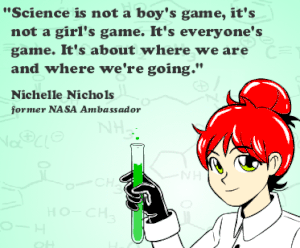
Yr 9 SCIENCE: Downloads and links
 Aust Curriculum - Science Year 9
Aust Curriculum - Science Year 9
![]() why study science: student perspective (3m 53s)
why study science: student perspective (3m 53s)

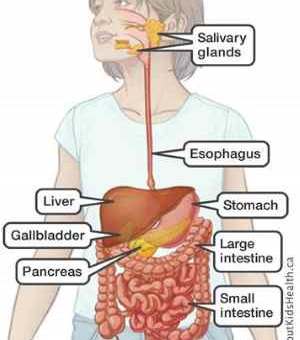

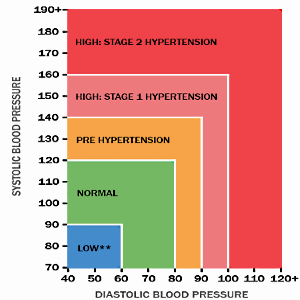

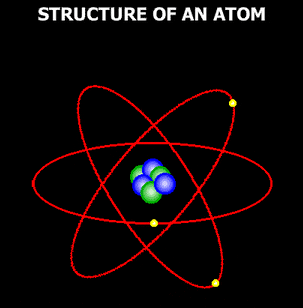


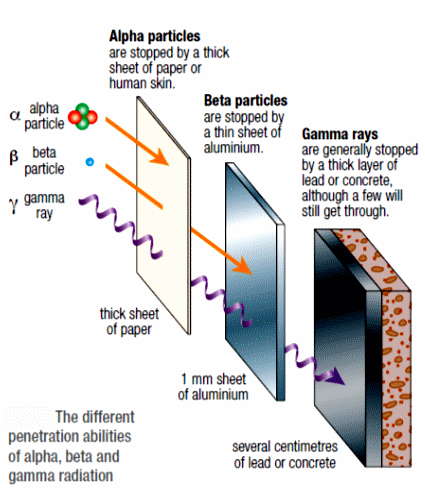


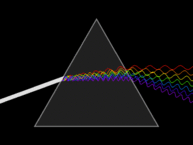
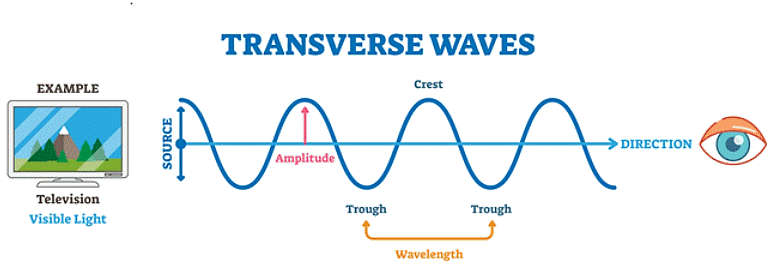
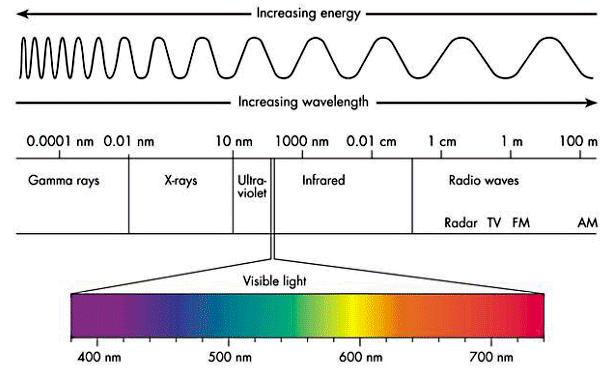
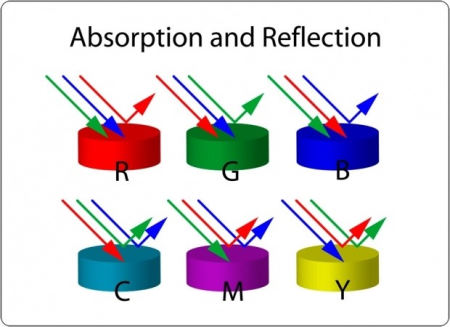
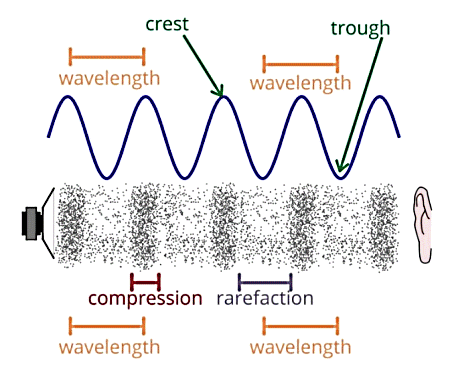
Javascript sourced from pHET colorado. Great script which allow you to become familiar with all the electrical circuits and measurements
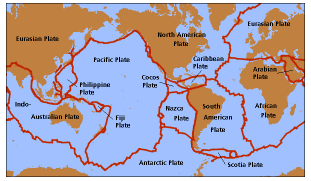
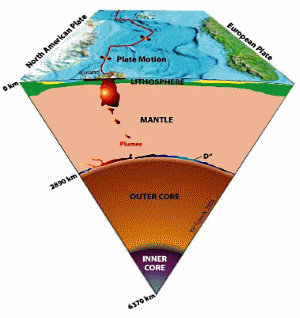
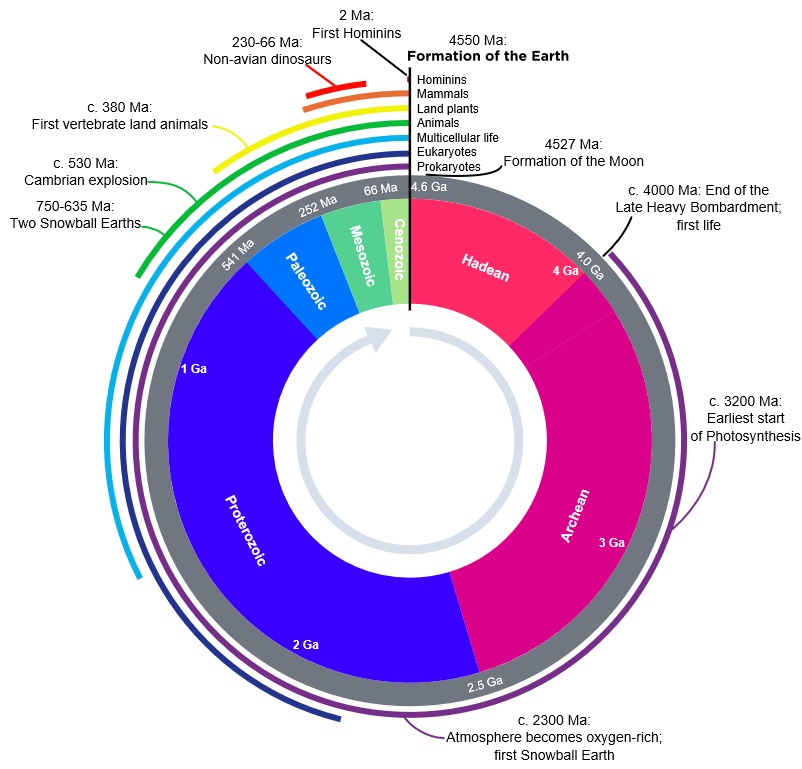
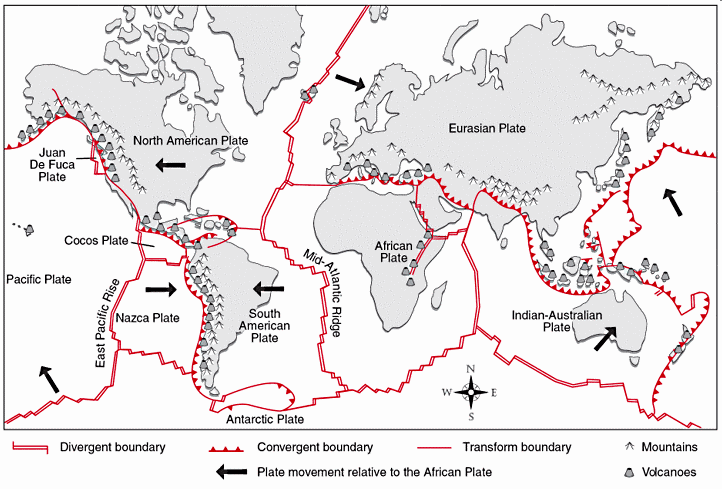
Right click, "open in new tab", to see detail of this map.
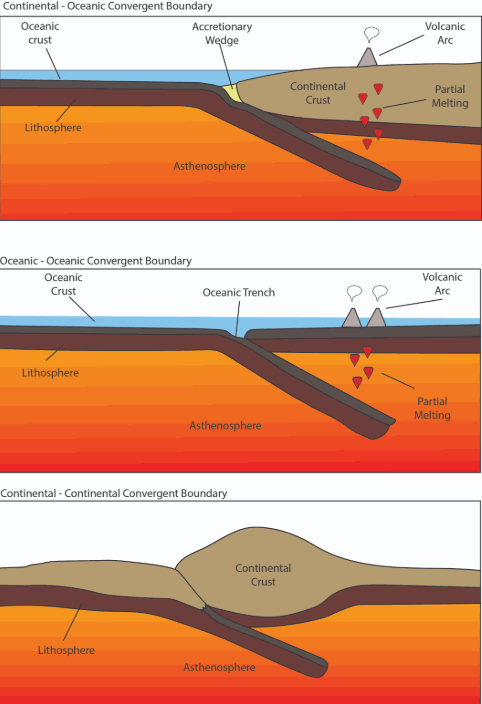

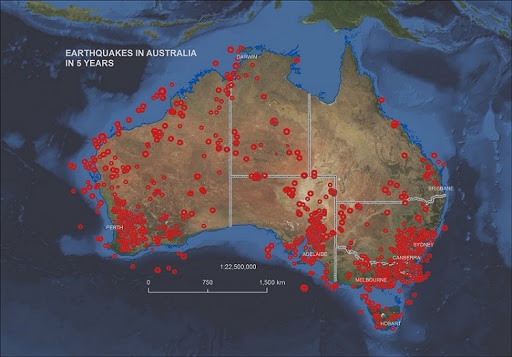
![]() Six story shake table - largest shake table in the world testing a six story apartment block specially built using a structural steel frame.
Six story shake table - largest shake table in the world testing a six story apartment block specially built using a structural steel frame.
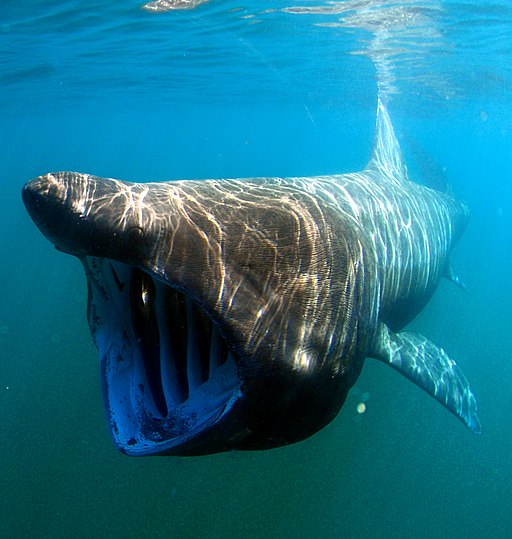
By Greg Skomal / NOAA Fisheries Service [Public domain], via Wikimedia Commons


By Brocken Inaglory (Own work) [CC BY-SA 3.0 (http://creativecommons.org/licenses/by-sa/3.0) or GFDL (http://www.gnu.org/copyleft/fdl.html)], via Wikimedia Commons
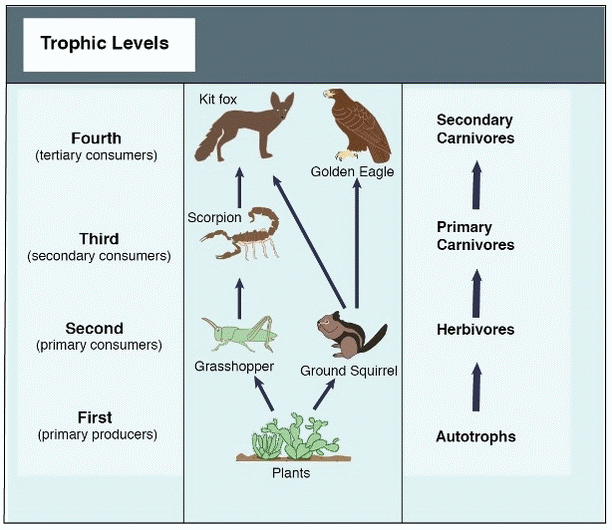
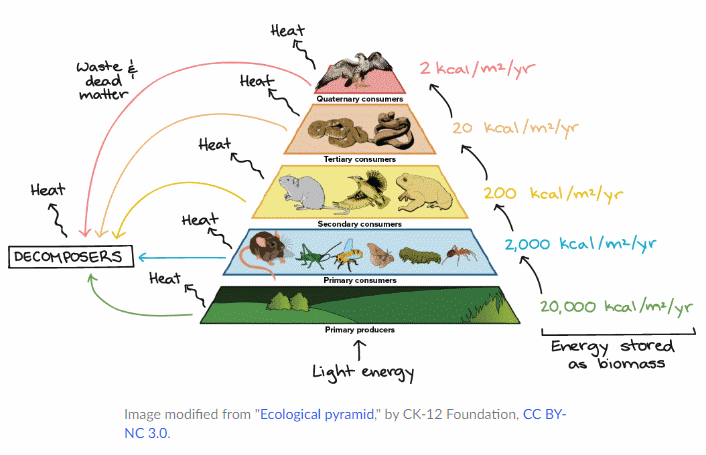


/>

